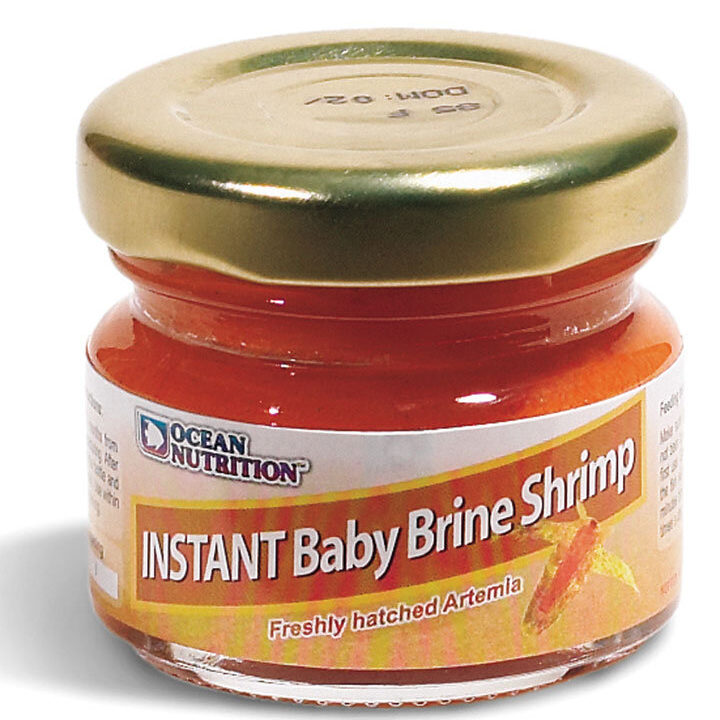There are many different ways of feeding jellyfish, each with their own advantages and disadvantages – and depending on your chosen food type (dried or live food).
We’d always recommend live food if you can get this.
Dried food is great for jellyfish, but will result in more regular maintenance (removing uneaten food daily for example).
Live Food Feeding
If you can get Live Baby Brine Shrimp as a food for your jellyfish, then we’d always recommend to use this. Although more expensive than dried food, it allows for a much cleaner jellyfish tank in the long run – and your jellies will love it!
We sell Baby Brine Shrimp Hatching Kits, which are super easy to use, and allow you to have a plentiful supply of fresh food for your jellies on a daily basis. We’d recommend all jellyfish keepers to consider using one of these!
As the food is live, there is no debris left over that you would normally see when using dried foods.
Feeding with Live Food is quite straightforward, just place into the tank (using a pipette) and your jellies will do the rest.
Hatching is quite straightforward too. Salted RO Water (like you’d use in your jellyfish tank) is added to the brine shrimp kit, along with 2 scoops of Brine Shrimp Eggs. Replace the kit’s lid, and wait 24-48 hours. Within this time, brine shrimp will have started to hatch, and you can feed these directly to your jellies – consider sieving the shrimp first.
Dried Food Feeding Methods
There are three different methods of feeding your jellyfish with dried food, which mostly come down to personal preference.
Using the Broadcast Method (Easy)
While this method is the easiest, it leaves food in the tank and requires more regular water changes. A video detailing this feeding method is shown below too.
- Prepare the correct amount of food for the jellyfish in a cup, and slowly pour it over the surface evenly across the tank water.
- To avoid overfeeding, pour in gradual amounts until you see the stomachs of the jellyfish become full.
- This method is of course the easiest, but leaves the risk of uneaten food, which could pollute your tank water.
- Expect to change your water more often if you use this method of feeding.
This video below demonstrates the broadcast feeding method:
Using the Pipette Method (Medium)
This method is probably the best if you don’t want to waste too much seawater and food. It should be noted that there has been reports of reduced feeding response from the jellyfish with regular usage of the pipette method. Should this occur, you may want to consider switching to the broadcast method.
- Prepare food in a cup with seawater from your jellyfish tank.
- Suck up the food using a long nozzle pipette and gently spray the food at the underside of the jellyfish (under the oral arms).
Using the Bowl Method (Hard)
This is the cleanest method of feeding your jellyfish as it does not pollute your main aquarium water over time.
- Using a ladle, transfer your jellyfish to a bowl of seawater from the aquarium.
- Feed your jellyfish into this bowl until their stomachs are visually full. This will take about ten to fifteen minutes. You may then transfer your jellyfish back into the tank.
- Take care not to accidentally transfer uneaten foods into your jellyfish tank.
- Note: Do not place your jellyfish outside of the water, as this will cause damage to the jellyfish’s delicate tissues.
- You must also prepare replacement seawater as you will lose a percentage of your seawater from the tank with each feeding.

